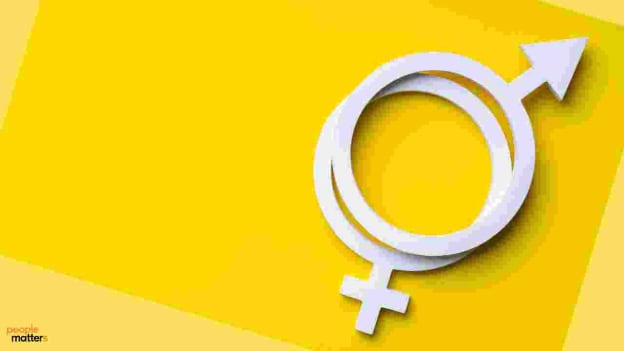Balancing the scales: Gender leadership in HR

In the corporate world, the scales of leadership often tip in favour of men, yet HR stands as a striking exception.
Women, the steady hands that often balance these scales, dominate the field. They comprise 71% of HR managers according to Forbes, and 69% of HR professionals as reported by HRxAnalysts. This isn’t just a surface-level presence; women hold 67% of VP of HR positions, a fact that tips the gender scales firmly in their favour.
Unlike many top corporate roles where male leadership persists, HR is a domain where women not only thrive but lead, holding the reins of influence.
Several factors contribute to this phenomenon. Some attribute it to traits often associated with women, such as empathy and a nurturing disposition, which align seamlessly with the traditional roles of HR. Historically, HR has shifted from the gritty terrain of industrial relations – a male-dominated, confrontational space – to a more developmental, psychological approach, well-suited to the skills traditionally attributed to women. The winds of change have blown favourably in their direction.
Others suggest that HR is one of the less discriminatory fields, offering women a clearer path to climb the corporate ladder. The transformation of organisational talent management has also played a crucial role.
Female HR leaders have been at the forefront of groundbreaking changes, such as eliminating traditional performance appraisals, enhancing employee engagement, and advocating for greater female representation in senior management.
Trailblazers like IBM’s Diane Gherson and Microsoft’s Kathleen Hogan exemplify how women are reshaping HR, driving waves of significant change within their organisations.
Read More: Why gender equality laws aren't working
Cracks in the glass geiling in HR
Yet, despite these strides, the gender scales are not fully balanced. Disparities remain, with men often steering the ship in strategic roles within HR, while women are more frequently found nurturing talent development. This division reflects broader societal stereotypes that still cast leadership in a male mould, challenging women’s advancement even in a predominantly female field.
Moreover, the spectre of compensation inequality haunts the profession. A pay gap persists even where women are the majority, underscoring the deep-rooted issue of gender pay disparities across professions.
The so-called "glass ceiling" remains intact. Men often ascend more quickly in roles where women dominate, a stark reminder of enduring stereotypes about leadership and management. As HR evolves towards more strategic and analytical functions, the need for a balanced skill set – combining empathy with analytical acumen – becomes increasingly critical. Women must navigate these choppy waters carefully, blending soft skills with strategic insight to shatter the glass ceiling.
Despite the challenges that still need to be addressed, the rise of women in HR roles, particularly in leadership positions, signifies a transformative shift in the corporate world. As organisations increasingly recognise the strategic importance of human resources, the potential for women to lead this evolution is immense. While hurdles remain, the contributions of female HR leaders are proof that with the right support and opportunities, women can and do excel in reshaping the future of work.
Read More: The business case for advancing more women leaders
Shattering the glass ceiling: insights from new research
A study from Johns Hopkins Carey Business School casts light on the invisible barriers women face in executive roles and the dynamics influencing the appointment of female CHROs, particularly when succeeding male predecessors. This research aligns with 'social role theory,' which posits that women are perceived as naturally suited to HR, and 'social categorisation theory,' where women, seen as outsiders in male-dominated boardrooms, are less likely to be appointed.
In recent decades, institutional pressures for greater gender diversity at senior levels have intensified. Employees, customers, media, and governments alike are championing diversity, not just for fairness but for the competitive advantage that diverse perspectives bring.
Read More: The rise of She-EOs: 51% are female leaders
Yet, the ascent of female executives in top management has been a slow climb. A 2016 survey revealed that only 9% of senior executives in S&P 1500 companies were female, with a mere 5.1% of CEOs being women. However, the CHRO position has moved closer to gender parity, with women occupying the role in over 50% of S&P 500 firms in recent years.
Richard Smith, professor of practice at Johns Hopkins Carey Business School, and his colleagues explored the forces at play in appointing female CHROs. They discovered that while HR's association with female traits supports social role theory, it isn't enough to tip the scales when a male CHRO is succeeded by a woman.
Predominantly male senior management teams often view women as outsiders, reinforcing gender biases and slowing the advancement of women into top executive roles.
Despite a growing appreciation for prioritising human capital and employee development, gender stereotypes and biases remain deeply entrenched. Large companies may support diversity at junior and middle management levels, but senior leadership is still an uphill battle. Thus, while pressures for diversity are mounting, they often collide with the forces of social categorisation theory, which resist change.
The rise of women in HR roles marks a significant shift towards gender diversity in leadership. Yet, understanding and overcoming the persistent glass ceiling requires addressing the deep-seated biases and stereotypes embedded in corporate culture.
As HR continues its evolution into a more strategic function, the success of female leaders in this field serves as a beacon of hope, illuminating the potential for broader organisational transformation.















